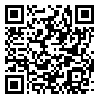Volume 18, Issue 20 (11-2020)
RSMT 2020, 18(20): 127-137 |
Back to browse issues page
Download citation:
BibTeX | RIS | EndNote | Medlars | ProCite | Reference Manager | RefWorks
Send citation to:



BibTeX | RIS | EndNote | Medlars | ProCite | Reference Manager | RefWorks
Send citation to:
Shah Hosseini S, Barati A H, NaserMeli M H, Moradi M. Comparison of vastus medialis muscle activity in patients with patellofemoral pain syndrome after a period of flexural strength training with and without electrophysiological feedback exercises. RSMT 2020; 18 (20) :127-137
URL: http://jsmt.khu.ac.ir/article-1-312-en.html
URL: http://jsmt.khu.ac.ir/article-1-312-en.html
, ahbarati20@gmail.com
Abstract: (4374 Views)
Given that more than 50 percent of patellofemoral pain syndrome include of overuse injuries, the aim of this study was to compare the vastus medialis muscle activity in individuals with patellofemoral pain syndrome after a period of strength and flexibility training with and without the electrophysiological feedback. A total of 30 subjects (15 men and 15 women) participated in this study. Subjects were divided into three group's control, therapeutic and therapeutic with electrophysiological feedback. One-way ANOVA was used to compare the activity of vastus medialis muscle in between groups. The results of this study showed that there was a significant difference between the groups in the activity of the vastus medialis muscle activity (P <0.05). The results of Tukey's post hoc test for intra-group comparisons showed that there was a significant difference between the control group with the therapeutic group (P = 0.024), the control group with the therapeutic group and the electrophysiological feedback (P=0.028) and the therapeutic group with the therapeutic group and the electrophysiological feedback (P<0.001). Conclusion: Regarding the results of this study, therapeutic exercises with electrophysiological feedback have a greater effect on the activity of vastus medialis than the therapeutic group in patients with patellofemoral pain syndrome.
Keywords: Vastus Medialis Muscle, Patellofemoral Pain Syndrome, Electrophysiological Feedback Exercises.
Type of Study: Research |
Received: 2019/05/3 | Accepted: 2021/01/27 | Published: 2021/01/27
Received: 2019/05/3 | Accepted: 2021/01/27 | Published: 2021/01/27
Send email to the article author
| Rights and permissions | |
 |
This work is licensed under a Creative Commons Attribution-NonCommercial 4.0 International License. |







